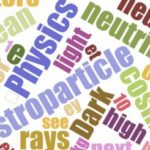
Amsterdam Strategy
21 September 2007
From opportunities to reality: European astroparticle physicists define their strategy in Amsterdam
On the road to the discovery of dark-matter particles, gravitational waves and the origin of cosmic rays, astroparticle physicists defined today their plans in Amsterdam during an important meeting of 200 physicists. After publishing their European Roadmap in June, they were for the first time able to compare detailed plans for European future large infrastructures with the available funds in the European agencies. Furthermore, foreign agencies from the United States and China were represented at the highest levels in view on a world convergence.
At the intersection of particle physics and astrophysics – at the frontier of the infinitely small and infinitely large – astroparticle physics is a rising field. It has been strongly emerging for the past ten years and has a very high discovery potential, aiming to answer the most exciting questions about the Universe such as “What is the Universe made of?”, “What is the origin of cosmic rays?” or “What is the nature of gravity or dark matter?”.
From undersea and underground laboratories to space, or in the most isolated deserts, astroparticle physics experiments accept very exciting challenges in which Europe is one of the major players. Astroparticle physics is really a science of the future and for next years will develop very large scientific instruments in order to detect the most elusive particles, and to penetrate the most intimate secrets of the Universe.
Joined together within the ASPERA* European network, the European agencies for research from 12 countries decided for the first time to share their efforts to define together the policy to be followed in this field. What are the great questions to solve? How is it possible to coordinate astroparticle physics at a European level? What will be the large European infrastructures for tomorrow? To answer these questions, ASPERA engaged in an important prospective work towards a common roadmap. This roadmap process was coordinated by a group of European and non-European experts chaired by Dr. Christian Spiering from DESY – Germany.
“An important milestone will be the elaboration of a final European roadmap associated with a detailed census of the existing budget and human resources available in the participating agencies. The enthusiasm with which the scientific community and the funding agencies embraced the process makes me confident of the outcome” said Professor Stavros Katsanevas from CNRS – France, the coordinator of ASPERA.
The European Commission already supports the design studies of important projects such as KM3NeT, a large future undersea neutrino telescope, which will be built in the depths of the Mediterranean Sea. It also recently announced its support for the design studies of two new large facilities, LAGUNA, a very large detector for proton decay and neutrino astronomy and the Einstein Telescope (ET), a next generation gravitational wave antenna.
Considering the European convergence criteria and their strong scientific interest, it was also recommended to engage the design studies for the Cherenkov Telescope Array (CTA), a new generation of European observatory for high-energy gamma rays and EURECA, a ton-scale bolometric detector for cryogenic research of dark matter.
The success of the ASPERA process unceasingly attracts new partners and the important meeting held in Amsterdam was for ASPERA the occasion to announce the request of Romania to enter the ASPERA network.
Defining the European strategy for Astroparticle physics with the whole community is the innovative challenge engaged by the ASPERA European network. It is a strong symbol that the construction of European research is on the move.



